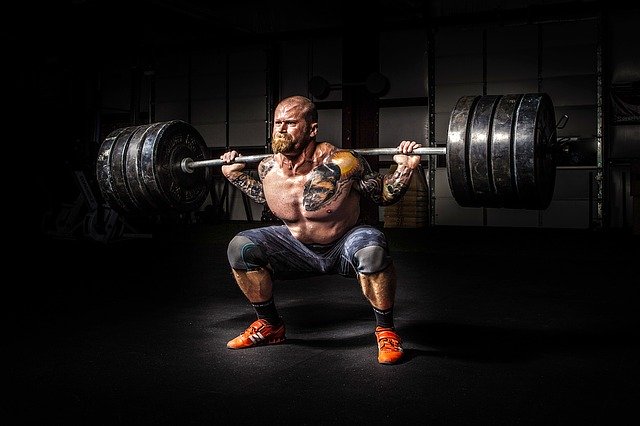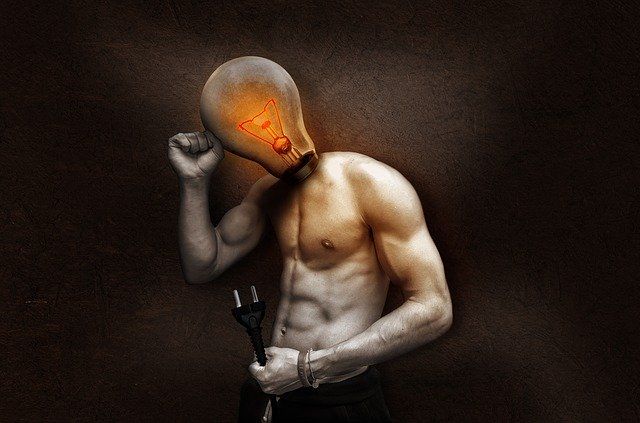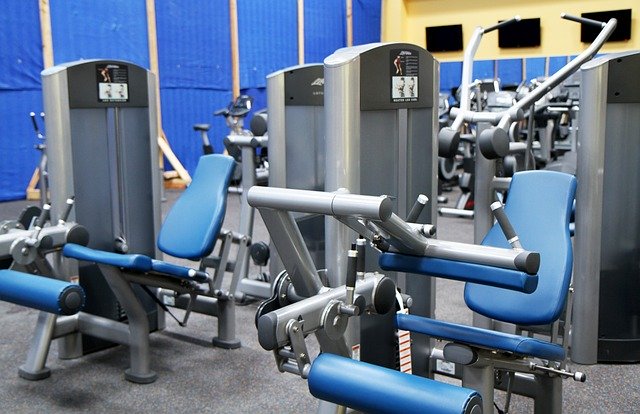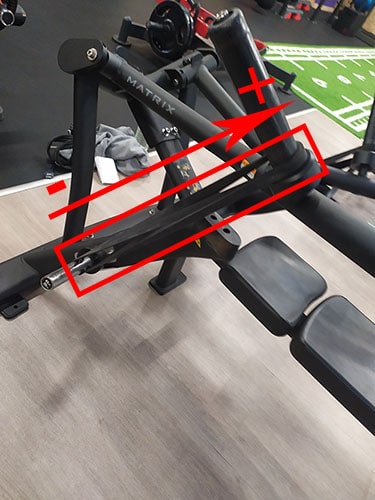There is so much bodybuilding exercise that you get a bit lost in it, so this article is only dedicated to polyarticular exercises (or basic). To save you time in your research, I have prepared a very complete exercise list , for each muscle group, to do indoors or at home !

If you are just starting out, no problem. You will know what it is, what are the advantages and disadvantages and how to integrate it all into your bodybuilding program, here is the summary:
What is a polyarticular exercise?
By definition, a polyarticular exercise is a movement that will mobilize several joints, and therefore, several muscles, unlike isolation exercises. This then explains why you will always be stronger on a polyarticular exercise.
In general, there are two schools in bodybuilding. Those who only practice the so-called basic exercises to build “functional muscle” and gain mass more quickly, on the other hand, those who favor isolation exercises to gain weight. muscle where they want it .
As I often say, in bodybuilding we have a lot of tools and methods of work. That said, the goal is to find what suits us and not what works for your neighbor, because there is a very high chance of not having the same results.
Let’s take a look at its advantages and disadvantages.
The advantages
Overall, it is true that polyarticular exercises are more effective for building strength and building muscle mass. In fact, the muscles are used more on a basic movement than on isolation, and who says better muscle solicitation means more results.
As far as strength is concerned, again the polyarticular exercises score a big point. It is obvious that you will be able to handle larger loads and therefore have better muscle hypertrophy . The force being essentially nervous, the nervous system will be exploited much more if several muscles interact. Consequently, the muscles then learn to work in synergy, hence the famous terms of “functional muscle”, in reality there are no “false muscles”, only muscles which manage to work together for a given movement. .
In terms of intensity, it’s obvious that it’s day and night with an isolation exercise. The more muscles that interact with the movement (in addition to a heavy load!), The more strenuous and tiring the exercise will be, therefore more calories will be burned . For example, the exercise of choice: the deadlift. It is an extremely intense exercise which mobilizes a lot of muscle group, from the calves to the forearms, as much to say to you that if you are an “ectomorph” like me and that you have difficulty to gain weight , such intense exercises like this replace a cardio session.
To summarize, here are the advantages of polyarticular exercises in outline:
- Better muscle recruitment
- Strength development (nervous system)
- Intensity of exercise (consumes a lot of calories)
The disadvantages
After seeing the benefits, it is clear that you may be tempted to ban isolation movements and only do polyarticular exercises. Even though poly should be the mainstay of your weight training program, over time, it’s obvious that it will handicap you if you go for it with your head down.
If you practice bodybuilding for an “aesthetic” purpose (which is probably the case), you should know that an aesthetic physique is above all a harmonious physique . I can tell you, for example, that having really big arms without shoulders is much less impressive than a medium arm with medium shoulders.
As we have seen previously, a polyarticular exercise engages several muscles , take the bench press for example. Normally, as you know, this is a basic exercise that primarily recruits the pectorals and secondarily the shoulders and triceps . On paper, it’s great! it is enough to do the bench press to have pecs, but in practice, it is something else … I did not take this example at random, because it was my case.
For a long time I believed that if I stepped up, I was going to get big pecs, and if I didn’t, I was doing it wrong. The reality is simply that my body type is not suitable for this polyarticular movement and that I did not know how to use my pecs on this exercise. The more I picked up the load, the bigger my shoulders.
Result, more than a year without working the shoulders which took all the work of the pecs, and more than a year of motor training on isolation movements to know how to properly contract my pecs .
Consequently, your genetics, your morphology and your sporting background will have an influence on polyarticular exercises, in your favor or against you. Usually if you have trouble feeling the target muscle, that’s a bad sign.
To summarize, here are the disadvantages of a polyarticular exercise :
- Muscle imbalance at term
- Risk of movement unsuited to its morphology
Structure your bodybuilding program intelligently
The message is always the same, bodybuilding is above all knowing yourself to build your program from exercises, methods and tools adapted to your situation. Polyarticular exercises are clearly a priority, only when they are useful.
Once again, if you’re doing strength training to achieve a great and harmonious physique, you’ll need to go through a fair amount of isolation exercises. Indeed, not only is the isolation used to “learn” to use a particular muscle, but also to recruit portions that are difficult to develop in polyarticular exercises.
For example, this is often the case with deltoids , the posterior deltoid is generally less developed than the lateral deltoid and even less than the anterior deltoid, so no need to strive for an exercise polyarticular to have a “full” shoulder.

When to use a polyarticular exercise?
In reality, this is a difficult question to answer, as it will be unique to everyone. As seen previously, it is mainly a question of morphology for basic movements. If you are not too experienced, a few precautions can help you know whether or not you should continue to focus on a particular polyarticular exercise, namely that the earlier you do it, the better. is.
Should you continue?
The list is not exhaustive, but the main one is there. If on these points you validate all four, a priori there is a good chance that this polyarticular exercise will be done for you:
- Burning sensation on the targeted muscle
- Muscle congestion
- Increase in workloads (over 3 to 6 months)
- Evolution of the physique (measurements, photos …)
Should we stop?
Unfortunately, not all exercises are right for you. The signs that can alert you to a polyarticular exercise to avoid are the following:
- Abnormal pain
- Stagnation or regression of charges
- Difficulty feeling the target muscle
- Difficulty congesting
- secondary muscles that grow more than the target muscle
For all the polyarticular exercises that suit you, knowing that they are energy-intensive exercises, place them preferably at the start of the session.
What to do if polyarticular exercise isn’t right for you
Don’t worry, all is not lost. With time and a little work, it is possible to do the polyarticular exercises that were not suitable for you before. However, it can be quite frustrating at first to focus solely on motor learning, but it’s a job that pays off in the long run.
Once you have determined which muscles are reluctant on polyarticular exercises in particular, you will have to use methods, tools and exercises to overcome this problem, we find:
- Isolation exercises
- Methods of intensification
- Bodybuilding accessories
Let’s take a quick look at the subject, I will devote specific articles to it.
Isolation exercise
The isolation exercise is the first solution for motor learning , especially if you are just starting out.

The way of training will be different. You should neither seek to gain strength or mass, only focus on muscle contraction and maintain it for a long time. Also, do not be afraid to do a lot of repetitions, 20, 30 even going as far as doing the famous series of 100 . Normally, congestion is not the only factor that stimulates muscle growth, but should always be sought after.
Isolation exercises are not traumatic for the joints, they allow you to recover quickly and increase your training frequency during the week. Due to lack of time, this can sometimes be used as a warm-up.
Methods of intensification
There are many method of intensifying bodybuilding . As a beginner, they are not to be prioritized at first.
If you have some experience, you can start using these two techniques:
- Pre-fatigue : Begin with an isolation exercise to tire the targeted muscle and follow with a polyarticular exercise without resting time.
- Post-fatigue : Conversely, you can start with a basic exercise, and when your secondary muscles take over, you follow up with an isolation exercise.
In order to know which technique to use, it is best to test. Indeed, it is possible to have the opposite effect to what you are looking for, that is to say, to increase the work on the secondary muscles.
In general, pre-fatigue works well on small muscles: biceps, triceps, shoulders and calves , while post-fatigue will be more suitable for large muscles: pectorals , back, thighs and buttocks .
There are of course other more advanced methods. They remain, in my opinion, the most interesting for learning to contract a muscle on a polyarticular exercise in particular.
Bodybuilding accessories
Sometimes, using a weight training accessory can be enough, to help recruit the target muscle in a polyarticular exercise .

For example, it can also be the case on pulling movements, such as chin-ups . In this case, pull straps (or straps) limit the intervention of the forearms. The work then becomes more efficient for the back muscles , in addition to gaining strength. I particularly like the 8-shaped pull straps.
Here is a list of strength training accessories, which can help you with polyarticular movements:
- Elastic
- Fat grip
- Straps
- Weightlifting shoes
- Occlusion band
- Bowtie…
Polyarticular exercise list for each muscle group
Finally, I will give you a list of polyarticular exercises, to be performed in the gym or at home with little equipment .
On some exercises, there are a number of variations. However, these are negligible details when you start, it is mainly about comfort.
Dos:
- Lumberjack draw
- Rowing Yates
- Horizontal pulley pull
- High-Row
- Low-Row
- Pronation pull-ups
- Pulley chest pull
- Deadlift
Chest:
- Bench press
- Dips
- Inclined press
- Pumps
- Developed declined
Biceps:
- Supine pull-ups
- Vertical pulley supine pull
Triceps:
- Tight grip bench press
- Dips
- Diamond pumps
Shoulders:
- Military development
- Standing rowing
Legs:
- Squat
- Front squat
- Hack squat
- Slip slots
- Bulgarian squat
- Squat cup
- Deadlift semi-straight legs
- Leg press
- Leg raises
Buttocks:
Of course, most exercises can be done with dumbbells , barbell or directly on a machine . In short, you just need to understand the movement and use your imagination to adapt it to the material you have available.
Regarding forearms, calves or abdominals, there is no grassroots movement. Therefore, the specific exercises to do for these muscle groups will be covered in an article dedicated to isolation exercises. However, these muscles will still be used in most basic movements.
If you want me to dwell on a particular exercise, you can let me know in the comments, I will also devote a whole article to it.


About the author